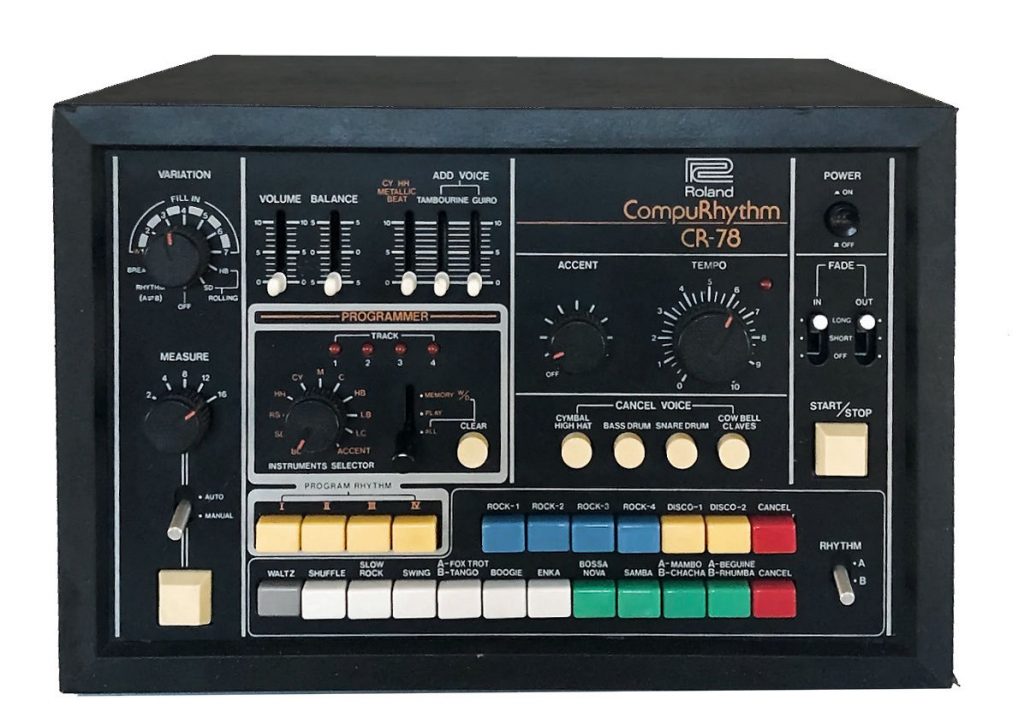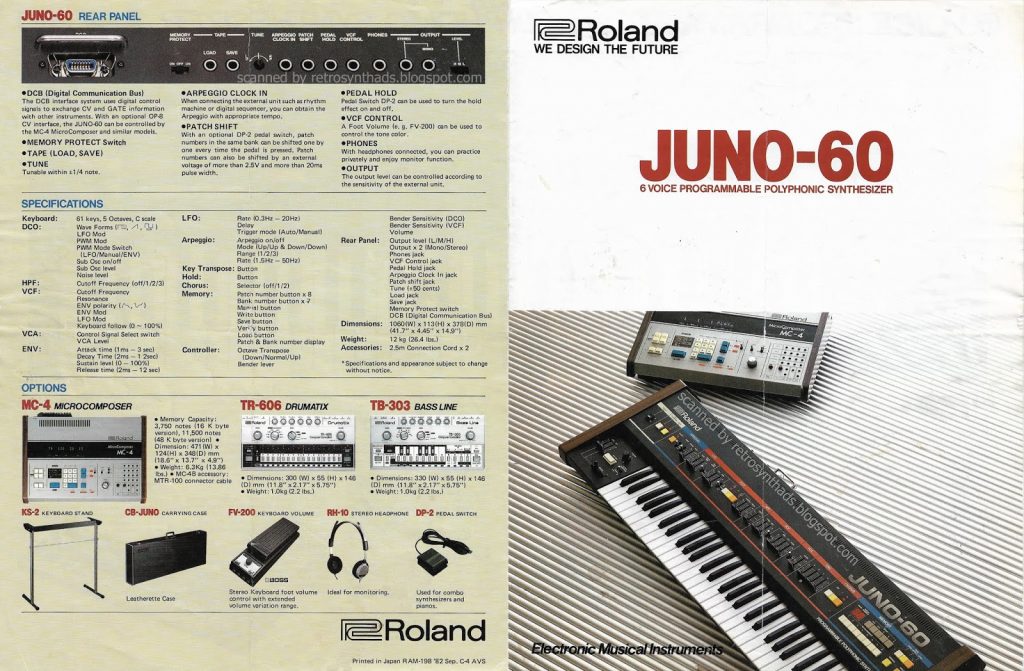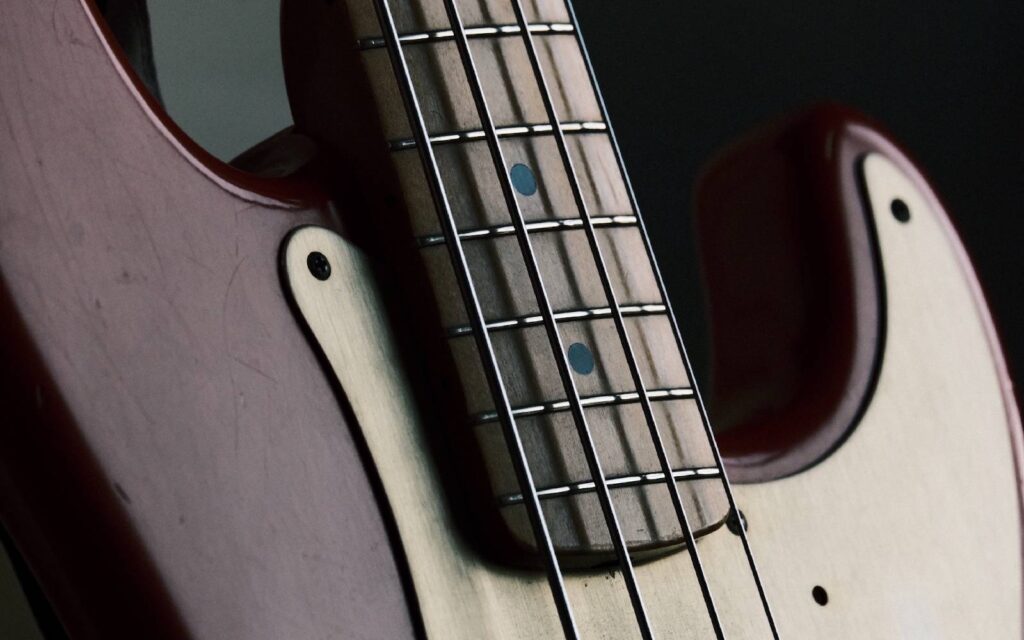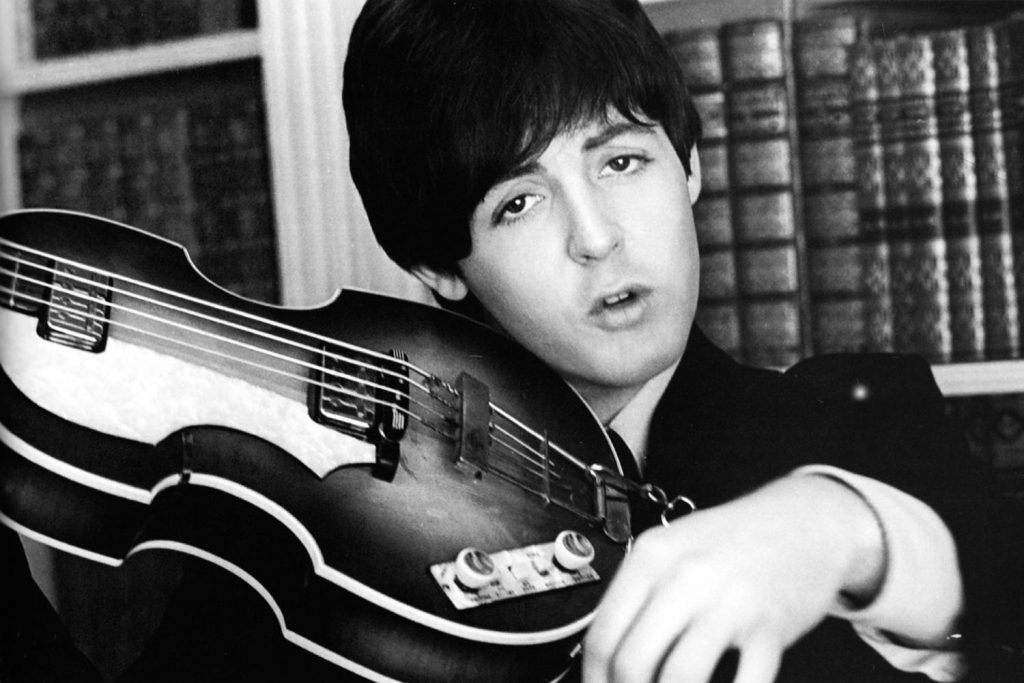Roland is arguably one of the most influential brands in the history of music.
They have produced so many revolutionary instruments over the years that they have even birthed entirely new genres. Roland instruments have been featured on countless hit records over a range of genres, and can be seen in both high end and bedroom studios alike.
A history of Roland
Ikutaro Kakehashi
Roland was founded in 1972 in Osaka, Japan by Ikutaro Kakehashi. Kakehashi always had an interest in electronics and would repair clocks, watches, and radios in his formative teenage years. This eventually led him to open his own business selling and repairing electronics. Although without any formal training in music, Kakehashi developed an interest in musical instruments, and soon pivoted his business to cater to musicians. This is where Ace Tone (or Ace Electronics) was born. Ace Tone primarily focused on organs and devices to accompany organists. The first device manufactured by Ace Tone was the R-1 Rhythm Ace in 1964. This was a small transistor based rhythmbox that could emulate drum sounds and was designed with organists in mind. What is interesting about Ace Tone and Kakehashi’s early career is that we can see the early prototypes of what were to be some of the most influential electronic instruments ever to be released. Their rhythm boxes for organists were the early incarnations of Roland’s drum machines and Ace Tone even developed an early form of the RE-202 Space Echo.
Read all the latest features, columns and more here.
Kakehashi would leave Ace Tone in 1972 to establish Roland after being unhappy with his standing in the company. Roland would continue to cater to organists by creating rhythm boxes and pseudo drum machines, as the first device developed by Roland was the TR-77. This again was aimed at organists but it was the first time Roland used the ‘TR’ moniker, which stands for ‘Transistor Rhythm’.
Roland SH1000
1973 saw Roland’s first venture into synthesisers with the SH1000. This again is the first time we see Roland using the popular ‘SH’ moniker. The SH1000 was the first mass-produced synth to come from Japan. It was affordable and simple to use, coming with 10 presets and a basic synthesiser signal path, with one oscillator, filter, envelope, and LFOs. Affordable and accessible synthesisers were not too common in the early days of mass-produced synthesisers, so the SH1000 did well considering the electronic instruments were far more niche in the ‘70s, with artists such as Vangelis and Blondie using the SH1000.
Roland Boss
A year later, Roland began their journey into effects with the founding of Boss. Boss is arguably the most influential and well known manufacturer of guitar pedals and stompboxes the world over, offering great sounding effects at an affordable price – you would be hard pressed to find a guitarist who doesn’t have at least one Boss pedal in their collection. 1974 also saw the release of the Roland RE-202 Space Echo, which is perhaps the most iconic tape delay to ever be produced. Found in studio’s across the world, the RE202 has been featured on countless hit records, and it is still being emulated and even reproduced by Roland in pedal form, almost half a century after its initial release. The RE-202 was also critical in the creation of dub music and Jamaican sound system culture, with producers such as King Tubby using the Space Echo on just about every remix he produced.

TR-808 drum machine
Roland would soon break new ground in the electronic instrument landscape again in 1978 with the release of the CR-78 CompuRythm, the world’s first programmable drum machine. Although limited and not having the most intuitive workflow, it opened up the market to a brand new instrument, the fully programmable drum machine. The follow-up to the CompuRythm was arguably Roland’s most influential and important release of all time, the TR-808 drum machine in 1980. The 808 drum machine was a fully analogue, programmable drum machine with deep, boomy kicks, tight, snappy snares, and crisp hi hats. There was just one issue however, it didn’t sound much at all like a real drum kit. With the release of the LinnDrum LN1 that same year, which used digital samples of real drums, the 808 flopped, only selling a handful of units over its production. This however, is what led to the 808 becoming the instrument we know it as today. The 808 eventually wound up in pawn shops across the globe, being sold at a fraction of their initial price. Young producers who were strapped for cash would experiment with the 808, and it eventually became a pivotal player in the creation of genres such as hip hop, techno, and electro.
In 1981, Roland put out three more instruments that would go on to define the synthesiser marketplace. Firstly was the Jupiter 8, one of the first analogue poly synthesisers with digital controls, adding stability and simplifying the interface to be far more accessible. The Jupiter 8 was incredibly popular in the ‘80s, with artists such as Toto, Stevie Wonder, and Queen all featuring it on their records. Also released that year was the Roland TB-303 and TR-606. Going back to their Ace Tone roots, the 303 and 606 were designed to be a practise tool for guitarists and keyboard players, by offering a programmable bass and rhythm sections for jams and song writing. The issue was that they didn’t sound much like real drums or real bass, leading them to flop and wind up in pawn shops for cheap, much like the 808 had done. And again like the 808, it found its way into the hands of up and coming producers looking to experiment. The 303 was soon adopted by emerging house and techno producers, and would directly lead to the sub genre ‘acid’, which saw a huge explosion in popularity in the late ‘80s, especially in the UK with the second summer of love in 1989.
With the popularity of synthesisers exploding in the ‘80s, Roland released an affordable polysynth in the form of the Juno 6. The Juno 6 was groundbreaking in a few ways. First, for its simplicity. The intuitive slider controls were accessible to those unfamiliar with synthesis, and the clever incorporation of a sub oscillator and built-in chorus effects meant players were able to get huge sounds with the synthesiser’s limited parameters. The other reason the Juno 6 was such a success was the digitally-controlled oscillator (DCO). Until that point, analogue synths were notorious for their temperamental tuning. Even slight deviations in weather and humidity could affect the tuning of the oscillators, making them unreliable in a live situation. The Juno 6’s DCO used digital controls to automatically tune the oscillators, making it far more reliable than anything else on the market. This feature led the Juno to become the go-to synthesiser for any live band or performance, with many Juno’s still holding their tuning, 40 years after their manufacturing.
In that same year, Roland also released the SH-101 monophonic synthesisers. Another classic synth in the Roland line up, the 101 took elements of the Jupiter and Juno series by incorporating sliders to control parameters which was very accessible to new players. The 101 would be adopted into a range of genres, but has become legendary for its use in house and techno.

In 1983, Roland would continue to innovate and redefine the musical landscape with their contribution to the development of the Musical Instrument Digital Interface (MIDI), a universal digital language that allowed electronic instruments to communicate with each other. The very first public demonstration of MIDI was with a Dave Smith Sequential 100 and a Roland Jupiter 6 sending note information to one another.
That same year, Roland would release another legendary piece of gear with the TR-909, the follow up to the 808. The 909 featured synthesiser drum sounds along with digital samples of hats and symbols, and would go on to define the rhythm sections of dance genres such as house and techno.
Roland Juno 106
The Juno 106 came the following year and built upon the Juno legacy, with easy programming, solid tuning, great sound, and now with MIDI, preset recall, and storage. The 106 would go on to be one of the most popular and best selling synths of all time, still sought after to this day, as it can be heard on records from Daft Punk and Tame Impala.
Roland has created more iconic instruments than perhaps any other manufacturer, and still operates to this day, Releasing new instruments as well as recreations of their classic gear in the forms of their boutique series and plugins. Their mantra of simple to use but great-sounding instruments have resonated with musicians all over the world, and their designs have been pivotal in the creation and popularisation of entire genres. Electronic dance music as we know it may not exist in the same capacity today without the 303, 808, and 909, and popularisation of electronic music and synthesisers in the ‘80s may not have had such a grip on the music landscape without Roland’s affordable and intuitive designs.
Check out more about Roland’s history here.







